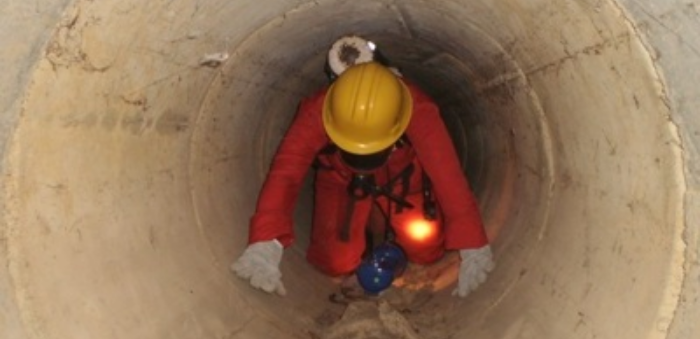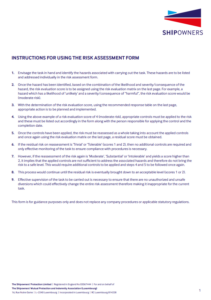Although the industry has repeatedly rung the bell on the dangers of enclosed space entry onboard, this continues to arise as the hidden enemy for crews. Only from September to November 2018, we had 8 reported fatalities related to enclosed spaces. In this regard, the Shipowners Club produced a sample risk assessment addressing the various hazards associated with enclosed space entry operations.
In a span of just 18 months, the Club alone has experienced 15 related claims comprising of falls, asphyxiation, explosive burns and six fatalities. These alarming statistics have prompted the Club to produce a sample risk assessment on enclosed space entry as part of its ongoing campaign.
This guidance addresses the various hazards associated with an enclosed space entry operation, enclosed space entry requirements and the more detailed points to be considered when implementing control measures to minimise the impact of the identified hazards.
Key points
- No entry to be permitted into an enclosed space unless the prescribed enclosed space entry procedures are followed and a permit to work issued. This must include a formal risk assessment to identify potential hazards and risk mitigation methods to control them accordingly.
- All potential enclosed spaces onboard each fleet vessel must be identified and marked accordingly at entry points. This is not a set list as some spaces may become enclosed or otherwise hazardous depending on the circumstances and so assessments should be carried out periodically.
- It must be kept in mind that a toxic atmosphere can exist in all enclosed spaces (on all vessel types – not necessarily on tankers) including but not restricted to cargo spaces, double bottoms, fuel tanks, ballast tanks, cargo pump-rooms cargo compressor rooms, cofferdams, chain lockers, void spaces, duct keels inter-barrier spaces, boilers, engine crankcases, engine scavenge air receivers, sewage tanks, and adjacent connected spaces. Methane gas is predominant on cargo vessels carrying coal in bulk.
- Enclosed entry procedures must be carried out for all personnel entering an enclosed space on board and not only limited to ship’s personnel.
- If a crew member is not comfortable with the atmosphere, they must be made aware they have the right to refuse entry into the enclosed space entry. If hot work or other tasks are to be performed within an enclosed space, an additional permit to work must be issued to supplement the enclosed space entry permit.
As SAFETY4SEA has earlier advised, when entering these spaces, the permit system established onboard is the solution:
- Inform: The authority designated to provide permission for entering should be informed. Usually master on board approves the procedure. Some Companies may require an Office approval for such high risk operations
- Prepare: The team should be thoroughly prepared for both entrance and rescue. Breathing devices, atmosphere meters, means of communication, safety lines, stretchers and adequate lighting should be checked prior entering.
- Check: measure air conditions in different levels and spaces prior entering. Ensure adequate ventilation.
- Assess: A detailed risk assessment is to be conducted taking into consideration all above items plus any other hazard or risk that may be occur for each space’s considerations.
- Brief – Plan: A toolbox meeting is to be conducted to inform team for step by step execution of procedure. Special comments for roles /responsibilities or for space’s special considerations should be analyzed. A contingency plan is to be established and all communication systems (primary / secondary) to be tested.
- Get Final Approval / Permit for specific time frame of procedure execution.
- As the objective is the rescue from enclosed space, first aid kit and on board hospital readiness should be checked. Emergency backup considerations should be available (Telemedical assistance or MEDEVAC readiness) if required.
In late 2018, InterManager launched a campaign to stimulate seafarers to think about safety issues when working in enclosed spaces and encourage them to identify and share measures which they believe would reduce risks.
Find the risk assessment document herebelow:



























































